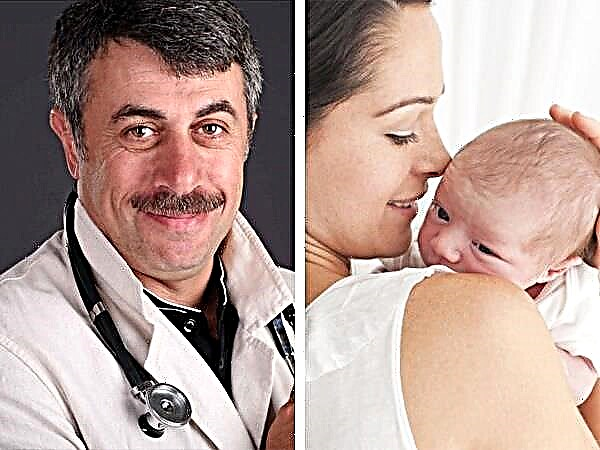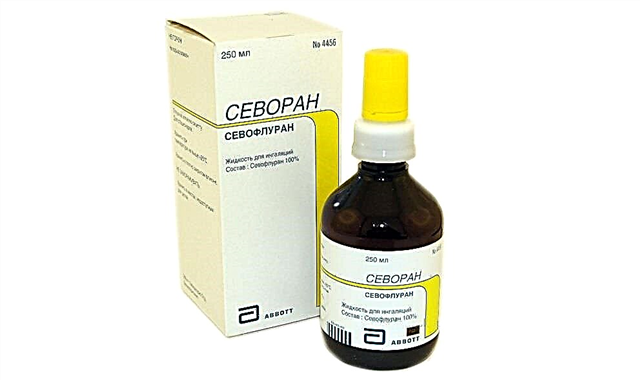What is Elf Face Syndrome?
Williams syndrome (Williams syndrome, "elf's face", Williams-Boyren) is a rare genetic ailment, which is accompanied by a specific lesion of internal organs, mental retardation and the typical appearance of the patient. All children with this genetic syndrome are similar to each other. Their unusual facial features make the baby look like a folkloric character, an elf. Because of this phenomenon, the disease got its second name - "elf's face" syndrome.
The disease was first described in the sixties of the last century. New Zealand cardiologist J. Williams discovered a pattern in the development of cardiac and vascular pathology and the unusual appearance of patients. The doctor suggested the genetic nature of the disease and gave impetus for further research on the syndrome. Subsequently, the disease got its name in honor of the New Zealand doctor.
Why does Williams syndrome develop?
With the help of various modern research methods, it was possible to establish the cause of the development of pathology. Changes in the child's body occur due to the loss of a section of chromosome 7, located on her long shoulder. The "lost" gap consists of about 25 genes and carries important information necessary for the normal formation and functioning of the child's body.
It is in this part of the chromosome that the genes are responsible for the development of the brain, the ability to fully perform their functions. In addition, a defect in the DNA molecule manifests itself in the inadequacy of the formation of the protein elastin, thyroid hormone - calcitonin, disruption of the trophic processes of the nervous tissue, and carbohydrate metabolism.
Elastin is one of the main proteins of connective tissue, which provides its important properties - firmness, elasticity, ability to recover. Thanks to this substance, the normal functioning of organs subject to stretching and compression (vessels, skin, tendons and others) is ensured. The main symptom of a lack of elastin in patients with Williams syndrome is problems with the cardiovascular system. These babies develop lesions of the walls of blood vessels and valves, arterial hypertension occurs.
A defect in a DNA molecule in most cases occurs spontaneously. A baby with a genetic pathology is born to absolutely healthy parents. Usually it is not possible to find the prerequisites for the development of the disease (the impact of adverse factors on the developing organism of the fetus, the appearance of a genetic syndrome in the family).
In the studies carried out, there was no connection between the occurrence of pathology either with the sex or with the nationality of the child. Therefore, it is very difficult to predict the development of the disease in a future baby. At the same time, an autosomal dominant mechanism of mutation transmission has been proven. Elf-face patients in 50% of cases pass on a hereditary defect to their children.

Disease symptoms
Early manifestations
The first signs of pathology can not always be noticed immediately after the birth of a child, although the baby is born with facial features characteristic of the syndrome. Over time, the appearance of small patients becomes more and more typical, and the presence of a genetic disease is obvious.
These crumbs are often born post-mature, but their mass does not reach normal values, it remains below normal for a long time. Then there are feeding problems "Special" kids, guys refuse to eat. Often congenital reflexes of a newborn, swallowing and sucking, discoordinated, it is difficult for the child to perform the movements usual for this age. And constant regurgitation and vomiting, constipation aggravate the situation that has arisen, the baby does not gain weight for a long time, lags behind in physical development.
Parents can contact a neurologist with complaints about late mastery of skills, irritability and tearfulness of babies. On examination, the doctor notices a reduced muscle tone in the child, although tendon reflexes are usually increased. Connective tissue pathology manifests itself in the occurrence of umbilical, inguinal hernias, which often recur.
In the case of congenital heart defects or dislocation of the hip, special attention is paid to the treatment of these manifestations of the syndrome. Surgical interventions are not excluded if the pathologies that have arisen are life-threatening to the baby.

As the child grows up, problems with digestion and weight gain fade into the background. Signs of a lag in physical, mental and mental development are becoming more clearly visible.
Classic symptoms of the disease
The doctor may suspect the diagnosis of Williams syndrome by noticing a combination of characteristic manifestations of the disease:
- features of the child's appearance.
It is not for nothing that this disease is called the "elf's face" syndrome, babies with genetic syndrome really look like fairy-tale characters. Full cheeks, a large mouth with swollen lips, especially the lower one, are noteworthy. The child's forehead is wide, and the brow ridges diverge along the midline.
The bright blue eyes are set wide, framed by puffy eyelids. The small patient's nose is turned up, with a blunt end, and the chin is somewhat pointed. In addition, when examining babies, low-lying ears, a protruding back of the head, and squint are often found.
All these features give the baby's face a special expression that can be observed in all children with Williams syndrome, especially when smiling. Not necessarily the presence of all the external signs of the "elf face" in one child, there are different options for their combination, but the appearance of babies remains typical. Over time, the facial features of the crumbs change, and the similarities between patients become more noticeable;

- lag in physical development.
Crumbs with Williams syndrome in the first years of life do not gain weight well, they can later master the necessary skills due to muscle hypotension. In patients with the genetic syndrome, doctors report impaired coordination and motor skills. Such crumbs hardly learn to take care of themselves, to make simple movements for other children. Teeth erupt late, often of irregular shape, affected by caries, malocclusion is possible.
By the age of 3, children usually catch up with their peers in physical development. The situation changes in adolescence, when many of the "special" children begin to gain weight, become full and friable, which is associated with disruption of the endocrine system.
Other patients acquire new features in appearance - a long neck, curvature of the spine, flat feet, deformity of the chest. These pathologies are associated with muscle hypotonia, which is widespread throughout the body. Weak muscles are not able to create the necessary frame, to keep the trunk in the correct position.
All patients with Williams syndrome have a distinctive, “raspy” low-pitched voice. This feature appears in early childhood and is associated with a lack of elastin in the vocal cords;
- mental retardation.
Parents notice the first signs of developmental lag when the baby does not begin to pronounce words by the due date, the speech development of children suffers. The ability to pronounce short words occurs at about 2 years of age, simple phrases at 4 - 5 years. This aspect is of great concern to moms and dads, because the baby has a friendly character and is happy to "communicate" with other children. Over time, with the right training, the guys catch up on this skill;

Despite the difficulties in mastering simple skills, these kids are distinguished by their excellent ability to play music and play musical instruments. As they grow up, the child's intellect gradually develops, the child begins to speak, is capable of poetry, playing music, but the final IQ indicators do not exceed 80, even in an adult. It is difficult for a child to learn motor skills, exact sciences, mathematics, writing, reading.
Due to the specific gravitational uncertainty, it is very difficult for the baby to maintain balance. Particular difficulties arise when walking on uneven surfaces, climbing stairs, and swinging.
Because of the way the brain functions, children with Williams syndrome have very specific developmental delays. They play musical instruments with pleasure, have excellent hearing and the ability to improvise, but only a few of them master the musical notation. And the well-developed, poetic oral speech of these children looks unusual against the background of difficulties in learning to read and write, a general lag in development;
- features of temperament.
Elf-faced babies are usually good-natured and very sociable. They are happy to communicate with peers and adults they know well. Difficulties may arise in contact with strangers due to the increased anxiety of children.
The crumbs are distinguished by emotional incontinence, rapid mood swings, hysteria, and hyperactivity is possible. All these features, combined with the underdevelopment of intellectual functions, form the character traits of an adult patient with Williams syndrome: friendliness, spontaneity, infantilism, foolishness and, at the same time, talent;

- pathology of the circulatory system.
Damage to the cardiovascular system is observed in most patients with Williams syndrome. This symptom is explained by a lack of connective tissue protein in the blood vessels, the development of elastin arteriopathy.
The disease is manifested by narrowing of the arteries - supravalvular stenosis of the aorta, pulmonary trunk, stenosis of the renal arteries, vessels of the brain, heart. The child has arrhythmia, high blood pressure. Such patients are registered with a cardiologist for a long time, regularly undergo examinations in order to identify the dynamics of violations.
The damage to the cardiovascular system in newborns is especially difficult. The birth of a baby with a congenital heart defect requires timely adequate treatment, often with the help of surgical methods;
- pathology of other organs.
Children with “elf's face” syndrome are registered with many specialists for a long time, they need the help of a dentist, since a disturbed bite, pathologies of tooth development and caries make themselves felt already in early childhood. Also, sick children have muscle weakness, pathology of the musculoskeletal system, hernial protrusions, vision problems, squint.
Hypercalcemia, an increased concentration of calcium in the blood, is explained by endocrine disorders and manifests itself in digestive disorders (which is most pronounced in young children), psychoemotional changes, and impaired neuromuscular conduction.
The most dangerous symptom of hypercalcemia is calcification of blood vessels and heart valves. The increased concentration of calcium in the blood leads to its "settling" in tissues and disruption of the circulatory system. The affected vascular walls become thinner, lose their elasticity, which leads to the development of cardiovascular failure.

Diagnostics
Usually, the identification of the syndrome is not difficult due to the characteristic clinical picture of the disease and consists of several stages:
- determination of external signs.
When examining a patient, attention is drawn to the characteristic appearance, a lag in mental and physical development. Often the doctor notices a hoarse, hoarse voice in a child, muscle weakness, squint, umbilical and inguinal hernia;
- laboratory research.
Examining blood by biochemical methods, you can find an increased concentration of calcium, cholesterol, thyroid-stimulating hormone.
Thanks to molecular genetic analysis, a mutation in chromosome 7 is determined, which helps to ascertain the genetic nature of the disease, to determine the severity of the pathology;

- instrumental methods.
With the help of a timely comprehensive examination, it is possible to identify signs of violations in various organs, to prescribe the appropriate treatment in time. Using methods such as EchoS, ECG, pathologies of the circulatory system, heart rhythm disturbances are determined. Ultrasound examination of the abdominal organs is necessary to exclude dysfunctions in the work of internal organs, primarily the kidneys.
X-ray examination will help to determine and select the correct treatment for diseases of the musculoskeletal system (deformities of the spine, sternum, foot). With the help of magnetic resonance imaging, it is possible to determine the signs of cerebral hypoplasia, a decrease in the posterior part of the corpus callosum and the volume of the white matter of the brain;
- expert advice.
To confirm the pathologies of the baby, a cardiologist, ophthalmologist, traumatologist, orthopedist, dentist, neuropathologist and other specialists are consulted.

Disease therapy
There is no specific treatment for this pathology. Until now, no means have been developed that could cope with a genetic defect in a child, correct a mutation in a chromosome. Therefore, therapy of the syndrome is aimed at eliminating the symptoms of the disease, improving the patient's quality of life.
Combating hypercalcemia
It is important to maintain the proper concentration of calcium in the blood to avoid dangerous complications of the disease. During the period of newborn and infancy, the question of the need to feed the baby with special mixtures with a low element content is being decided. As the child grows, his diet gradually expands, new foods are introduced, but the calcium level must be monitored constantly.
In general, the volume of injected fluid and nutrients should be sufficient to ensure the normal functioning of the body without overloading calcium-containing products. With a significant increase in calcium in the baby's blood, medication, infusion therapy, and the introduction of potassium preparations may be required.
Babies with Williams syndrome are contraindicated in the use of vitamin-mineral complexes, which include calcium and vitamin D.
Treatment of cardiovascular pathology
Depending on the severity of the manifestations, the tactics of treating the pathology of the heart and blood vessels also change. Minor problems are treated conservatively, blood pressure is reduced by drugs from the group of ACE inhibitors, calcium antagonists, diuretics, beta-blockers. In severe cases, surgery is required.
Symptomatic therapy
Children with “elf's face” syndrome are registered with many specialists. They carry out the correction of visual acuity, elimination of dental defects, treatment of flat feet and pathologies of the spine, removal of hernias.
A neuropathologist often prescribes in complex treatment drugs that improve cerebral circulation and stimulate the mental development of a child - "Piracetam", "Vinpocetin", "Cerebrolysin". To stimulate physical development, it is good to use the methods of physiotherapy - massage, exercise therapy, magnetic and ultrasound therapy, and others.

Social adaptation of the child
Psychotherapy, work with psychologists, speech therapists are necessary to improve the intellectual development of the child, support the family. Competent specialists will explain to parents what exercises contribute to the development of speech, writing, reading, non-verbal skills. Families in which an unusual child is born need the help of a psychologist who will help to accept the exclusivity of the baby, teach the baby to adapt to the people around him.
The peculiarity of children with the "elf face" is a pronounced difference between verbal and non-verbal IQ levels. Intellectual development occurs due to the mastery of speech, while spatial representations do not develop. It is difficult for these children to complete tasks such as assembling a pyramid, drawing a drawing, mastering mathematics, and performing physical exercises.

What is Williams-Campbell Syndrome?
Due to the consonance of the names, parents sometimes confuse Elf Face Syndrome with Williams-Campbell Syndrome. This disease is characterized by a malformation of the cartilaginous rings of the bronchi and is manifested by bronchial obstruction and the development of broncho-pulmonary infections. Although Williams-Campbell syndrome is also classified as a genetic disorder, there is no link between the illness and elf syndrome.
Forecast and prevention
The life expectancy of patients with Williams syndrome is slightly lower than that of other people. Health problems are mainly in the pathology of the heart and blood vessels and metabolic disorders.
Parents of “special” children should be aware of the sudden deaths of children with Williams syndrome, which are more common before the age of 6 years. The cause of death is acute myocardial ischemia and ventricular arrhythmia. Therefore, regular examination of the cardiovascular system and timely treatment of pathologies are very important to maintain the health of the baby.
Children with genetic syndrome lag behind in development from their peers, but their lively character and docile disposition enable the baby to socialize. Communication with other children is very important for the development of an unusual child and parents should make every effort to help the baby adapt in society. Adult patients cannot work due to their illness and require the supervision and supervision of relatives throughout their lives.
There are no preventive measures to prevent the syndrome, since in most cases the cause of the pathology is spontaneous mutation. If a person suffering from genetic syndrome decides to have a child, the risk of having a baby with pathology reaches 50%. In this case, medical genetic counseling of the family is required.

Conclusions
Elf syndrome is a rare genetic disease that no family is immune from. A kid with a genetic disorder is very different from his peers and requires special attention from his parents. These unusual children are very sociable, friendly and often talented, although their intelligence is significantly reduced. Mothers and fathers of special children should try to understand their illness and try to create conditions for improving the quality of life and social adaptation of babies.



